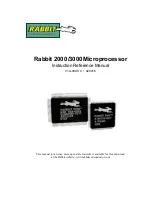
1-5
Configuration Prerequisites
Patches are released per device model or card type. Before patching the system, you need to save the
appropriate patch files to the storage media of the device using FTP or TFTP. When saving the patch
files, note that:
z
The patch files match the device model and software version. If they are not matched, the hotfixing
operation will fail.
z
Name the patch file properly. Otherwise, the system cannot locate the patch file and the hotfixing
operation will fail. The name is in the format of "patch_
PATCH-FLAG suffix
.bin". The
PATCH-FLAG is pre-defined and support for the PATCH-FLAG depends on device model or card
type. The first three characters of the version item (using the
display patch information
command)
represent the PATCH-FLAG suffix. The system searches the root directory of the storage medium
(flash by default) for patch files based on the PATCH-FLAG. If there is a match, the system loads
patches to or install them on the memory patch area.
Table 1-1
describes the default patch name for each card type.
Table 1-1
Default patch names for different card types
Product
Card type
PATCH-FLAG
Default patch name
mpu PATCH-MPU
patch_mpu.bin
lpb PATCH-LPB
patch_lpb.bin
S7900E
lpr PATCH-LPR
patch_lpr.bin
The loading and installation are performed on all cards that are in position and OAM CPU, so before
these operations, save the patch files for the active main board (AMB) and interface card to the root
directory of the AMB's storage medium, and save the patch files for the standby main board (SMB) to
the root directories of the SMB's storage medium. Make sure the patch files saved on the AMB and
SMB are the same.
One-Step Patch Installation
You can use the
patch install
command to install patches in one step. After you execute the command,
the system displays the message "Do you want to continue running patches after reboot? [Y/N]:".
z
Entering
y
or
Y
: All the specified patches are installed, and turn to the RUNNING state from IDLE.
This equals execution of the commands
patch location
,
patch load
,
patch active
, and
patch run
.
The patches remain RUNNING after system reboot.
z
Entering
n
or
N
: All the specified patches are installed and turn to the ACTIVE state from IDLE. This
equals execution of the commands
patch location
,
patch load
and
patch active
. The patches
turn to the DEACTIVE state after system reboot.
Follow these steps to install the patches in one step:
Summary of Contents for S7902E
Page 82: ...1 4 DeviceA interface tunnel 1 DeviceA Tunnel1 service loopback group 1 ...
Page 200: ...1 11 DeviceB display vlan dynamic No dynamic vlans exist ...
Page 598: ...ii ...
Page 1757: ...4 9 ...
Page 1770: ...6 4 ...
Page 2017: ...2 11 Figure 2 3 SFTP client interface ...
Page 2238: ...1 16 DeviceA cfd linktrace service instance 1 mep 1001 target mep 4002 ...
















































